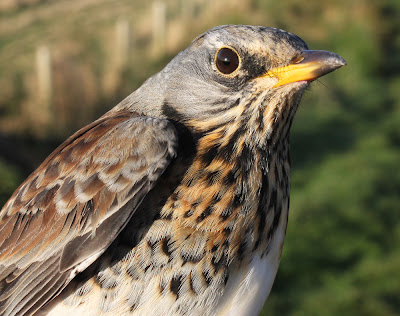Not much of a post today on Another Bird Blog as it rained all morning which meant I couldn’t get out until 1230. By 1530 what sun there was started to fall towards the horizon and the light began to fail, and as birds set off to their roosts I too called it a half-day.
At Fluke Hall I’d found 8/10 Redwings, 4 Blackbird and 2 Song Thrush in the hedgerows, together with a fine male Brambling which flew in from the stubble along with a handful of Chaffinch. Along the lane were 2 Reed Bunting, 8 Skylark and 12 Tree Sparrow, with a couple of Goldcrest in the woodland and a Kingfisher darting twice across the quiet pool.
Reed Bunting
With showers still around it wasn’t much of a day for walking although a stroll along the Lane Ends sea wall produced a bonus in the form of 2 Merlin scrapping briefly before they went their separate ways. One headed towards Fluke, the other in the direction of Cockerham where I saw it perch up on the thinnest of tree debris out on the marsh. Otherwise, 2 Meadow Pipit, 3 Skylark and huge numbers of Pink-footed Geese, upwards of 8,000.
Next came a drive around Moss Edge, Cockerham where 32 Whooper Swans fed on a stubble field, the swans seeming to be split into family groups as below, 2 adults and 3 youngsters. Further round the moss circuit the Little Owl was on lookout duty at the usual spot, surely the Fylde’s most regular and well known location to find the species?
Whooper Swan
Little Owl
Other birds about the soggy moss: 800 Starling, 15 Tree Sparrow, 2 Redwing, 1 Reed Bunting, 6 Curlew, 600 Black-headed Gull.
Sunday looks a better day, so log in then to see where Another Bird Blog spent the day, or at least part of it.










































.JPG)






.jpg)











